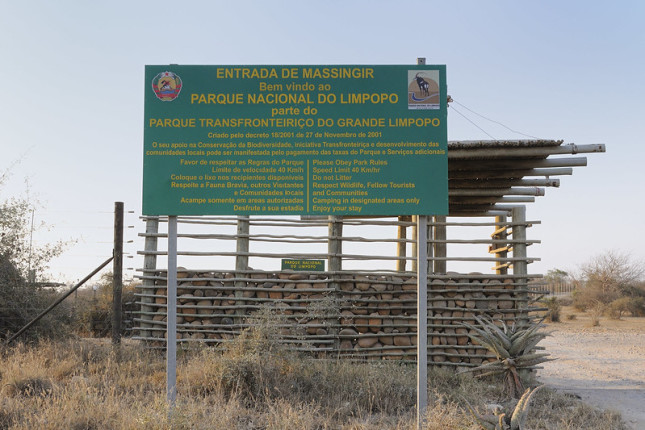-
Beware the Dark Side of Environmental Peacebuilding
January 8, 2020 By Tobias Ide
Environmental peacebuilding is a good idea. As a practice, it aims to address simultaneously environmental problems and challenges related to violent conflict. Examples include the promotion of environmental cooperation between rival states, conflict-sensitive adaptation to climate change, and restoring access to land and water in post-conflict societies. As a concept, environmental peacebuilding directs researchers’ and politicians’ attention to cooperative adaptation as a response to environmental stress. It thus helps to correct one-sided narratives about environment-conflict links.
However, environmental peacebuilding also has a dark side. In other words, environmental peacebuilding practices can negatively affect development, chip away at environmental protection, and erode peace. Those who engaged in research and the practice of environmental peacebuilding need to pay more attention to these side effects in order to identify potential risk factors and develop good practices that can travel among projects.
In a study recently published in World Development, I highlight six different aspects of the dark side of environmental peacebuilding (the six D’s):
- Depoliticization: By avoiding contested topics and addressing the technical and scientific aspects of environmental issues instead, various groups have managed to facilitate transboundary cooperation in the Middle East. But environmental issues are deeply political. When people focus mostly on technical aspects, underlying socioeconomic inequalities (such as many Palestinians unequal water access) remain unaddressed and even invisible.
- Displacement: Large-scale environmental cooperation projects might improve interstate relations, but can also lead to displacement of local people, often without sufficient compensation. So-called peace parks like the Great Limpopo Transfrontier Park show that environmental problems can be a source of cooperation rather than conflict, but they also led to evictions and access restrictions for local people, who had lived on the land for decades.
- Discrimination: The negative impacts of environmental peacebuilding practices are often unevenly distributed along ethnic, social, or gender lines. Agricultural development schemes and natural resource-related projects in post-civil war societies, for instance, are also often directed towards male ex-combatants, who are considered the greatest threat to peace and stability. Consequently, women end up with fewer income opportunities and a higher dependence on men.
- Deterioration into conflict: Given that environmental peacebuilding often operates in contexts characterized by tensions and insecurity, escalation rather than de-escalation of conflict remains a real possibility. In the 1970s, Egypt and Sudan started to build the Jonglei Canal in Sudan to increase the amount of water available in the contested Nile basin. This stimulated fierce resistance, including support for violent actions, as local inhabitants were afraid to lose access to livelihood opportunities in the adjacent wetlands.
- Delegitimization of the state: If states allow for, or are even complicit in practices of displacement, discrimination, or conflict escalation, their legitimacy among the affected constituencies declines. Similarly, if citizens perceive that local civil society actors and international NGOs are more efficient at providing water infrastructure or disaster risk reduction in conflict-affected areas, their trust in state institutions is undermined.
- Degradation of the environment: Cooperation over environmental issues can improve intergroup and interstate relations, but it may also result in joint exploitation of natural resources. In some instances in Yemen, for example, joint efforts by hostile villages to solve local water problems led to deeper well drilling and accelerated groundwater overexploitation. International water cooperation among Kazakhstan, Kyrgyzstan, Tajikistan, Turkmenistan, and Uzbekistan also failed to address excessive agricultural water consumption and hence did not save the Aral Sea.
To be clear: Not all environmental peacebuilding practices have such implications, and if negative effects occur, they are often unevenly distributed and can co-exist with significant benefits.
But reflecting upon the negative impacts of environmental peacebuilding and developing strategies to avoid them is crucial for at least two reasons. First, research on environmental peacebuilding is rapidly developing. In fact, the recent first general conference of the Environmental Peacebuilding Association attracted more than 240 scholars and practitioners from 40 countries. Critical self-reflection is part of any research field and could, in the case of environmental peacebuilding, build bridges to research on, for instance, political ecology and critical conservation studies.
Second, environmental peacebuilding is growing in scope, and increasingly integrated in UN Environment Programme, UN Development Programme, NGO, and peacekeeping practices. Sensitivity towards potential negative side effects will therefore, in all likelihood, have a significant impact on the ability of these practices to promote peace, development and environmental protection.
Tobias Ide is a DECRA Fellow at the School of Geography, University of Melbourne, Australia.
Sources: Annals of the American Association of Geographers, Biosec, Environmental Peacebuilding Association, Environment and Urbanization, International Peacekeeping, Political Ecology, South African Geographical Journal, World Development.
Photo Credit: Massingir entrance to Limpopo Transfrontier Park, August 2012, by Flickr user Andrew Ashton.
 A Publication of the Stimson Center.
A Publication of the Stimson Center.






